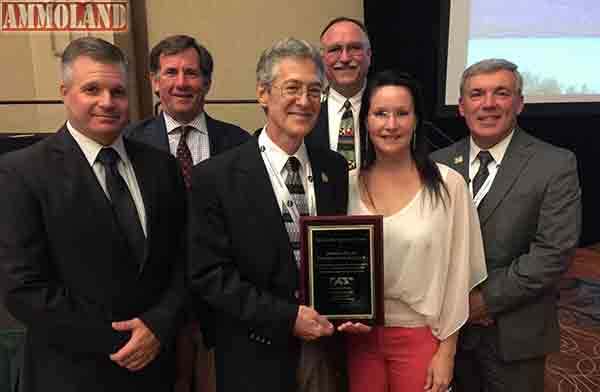

PHILADELPHIA –-(Ammoland.com)- For 21 years, the Georgia Plant Conservation Alliance has helped conserve Georgia’s rare plants. This week, that legacy of work and leadership landed a rare honor.
The Association of Fish & Wildlife Agencies presented a special recognition award to the Department of Natural Resources’ Dr. Jon Ambrose, representing the alliance, during the association’s annual meeting Tuesday. The award celebrates the Georgia Plant Conservation Alliance’s “outstanding contributions” to the association and to advancing professional fish and wildlife management in North America.
Formed in 1995, the alliance is an innovative network of more than 40 public gardens, agencies, schools, companies and conservation organizations committed to preserving Georgia’s endangered flora. The DNR Nongame Conservation Section, which Ambrose leads as chief, is a charter member.
The group initiates and coordinates efforts to protect natural habitats and endangered plant species statewide through management, education, and rare-plant propagation and outplanting. Recovery projects target 100 imperiled species, from swamp pink to whorled sunflower. Members also helped develop and revise the State Wildlife Action Plan, Georgia’s guiding strategy for conserving animals and plants.
Recognized as a national leader in plant conservation, the alliance has become a model, DNR Commissioner Mark Williams said. “GPCA has proven incredibly effective in focusing and increasing efforts to conserve Georgia’s rare plant species and their habitats. Not only is this work benefiting our state, other states are considering setting up alliances, meaning plant conservation in those states will reap from what the GPCA has sown in Georgia.”
Dr. Wilf Nicholls, director of the State Botanical Garden of Georgia in Athens, said ensuring “our state is as rich and biodiverse as the one we inherited is a lofty goal.” “But in a true spirit of openness and sharing,” Nicholls said, “the GPCA has brought together dozens of institutions and agencies all working together toward well-defined conservation goals. It has proven to be a recipe for success for which we can all be proud.”
The State Wildlife Action Plan identifies 290 plant species as a high priority for conservation. Conserving that range of species, along with others, now and for future generations requires collaboration. By focusing the efforts of members, the Georgia Plant Conservation Alliance is meeting that need.
- Members are key to a Candidate Conservation Agreement that is helping conserve the rare wildflower Georgia aster, and helped keep it off the federal endangered species list.
- The network has developed and honed the concept and practice of safeguarding, used to prevent local extinctions of rare-plant populations. Eleven institutions hold and manage ex-situ collections for recovery and study.
- From 2011 through 2016, member institutions led more than 300 presentations, staffed 339 classes and trips, and wrote or were involved in 134 articles regarding plant conservation.
- The benefit of establishing GPCA-like groups in the region will be central to the Southeastern Partners in Plant Conservation Symposium, set for Nov. 1-3 at Atlanta Botanical Garden.
In addition to the State Botanical Garden of Georgia and DNR, alliance member institutions include Atlanta Botanical Garden, Atlanta Botanical Garden Gainesville, Atlanta History Center, Augusta University, Beech Hollow Farms, Botanic Garden at Georgia Southern University, Brenau University, Callaway Gardens, Chattahoochee Nature Center, Chattahoochee River National Recreation Area, Coastal WildScapes, East Georgia State College, Columbus State University, Fort Valley State University, Georgia Botanical Society, Georgia Department of Transportation, Georgia Exotic Pest Plant Council, Georgia Institute of Technology, Georgia Native Plant Society, Georgia Power Company, Georgia Southern University, Georgia Wildlife Federation, Jacksonville (Fla.) Zoo and Gardens, Joseph W. Jones Ecological Research Center at Ichauway, Kennesaw State University, Piedmont College, Shorter College, The Nature Conservancy of Georgia, The Nature Conservancy (Fort Benning), U.S. Department of Agriculture National Seed Laboratory (Macon), U.S. Fish and Wildlife Service (Athens, Mississippi and South Carolina Field Offices), U.S. Forest Service Chattahoochee-Oconee National Forests, U.S. Natural Resources Conservation Service (Georgia), University of Georgia, University of North Georgia, Valdosta State University Herbarium and Zoo Atlanta.
Learn more about the alliance at www.botgarden.uga.edu (click “Conserve”) and on Facebook (www.facebook.com/georgiaplantconservationalliance). Work during fiscal year 2015 is detailed in DNR Nongame Conservation Section’s annual report, www./georgiawildlife.com/conservation/AnnualReport.
